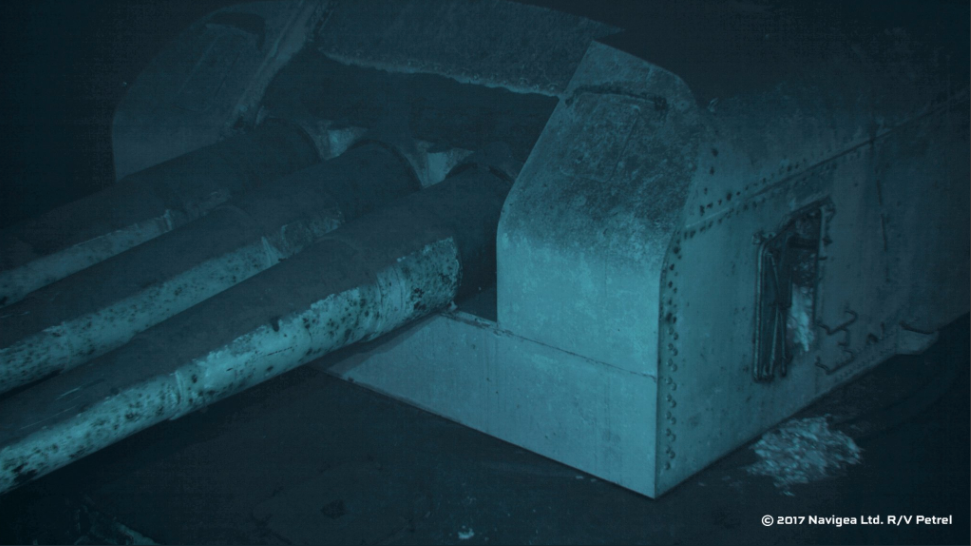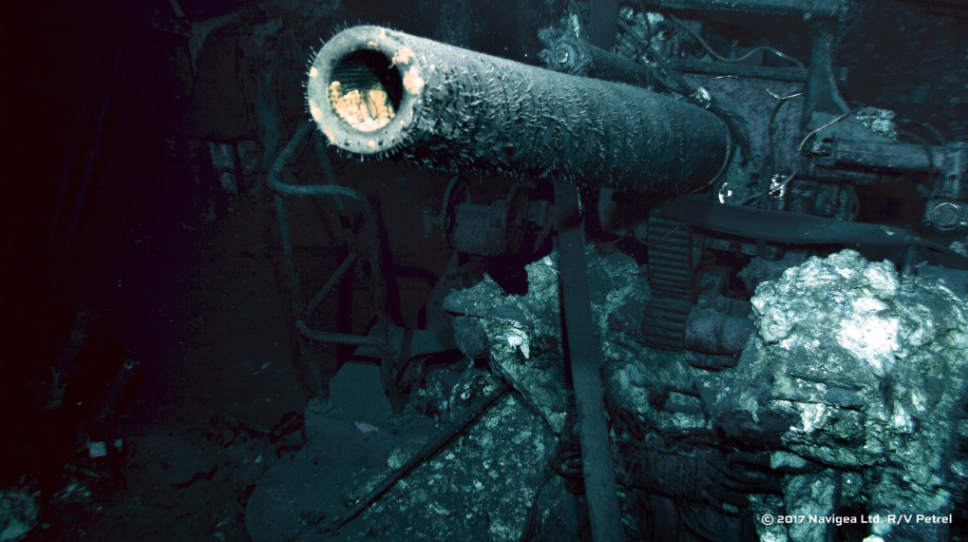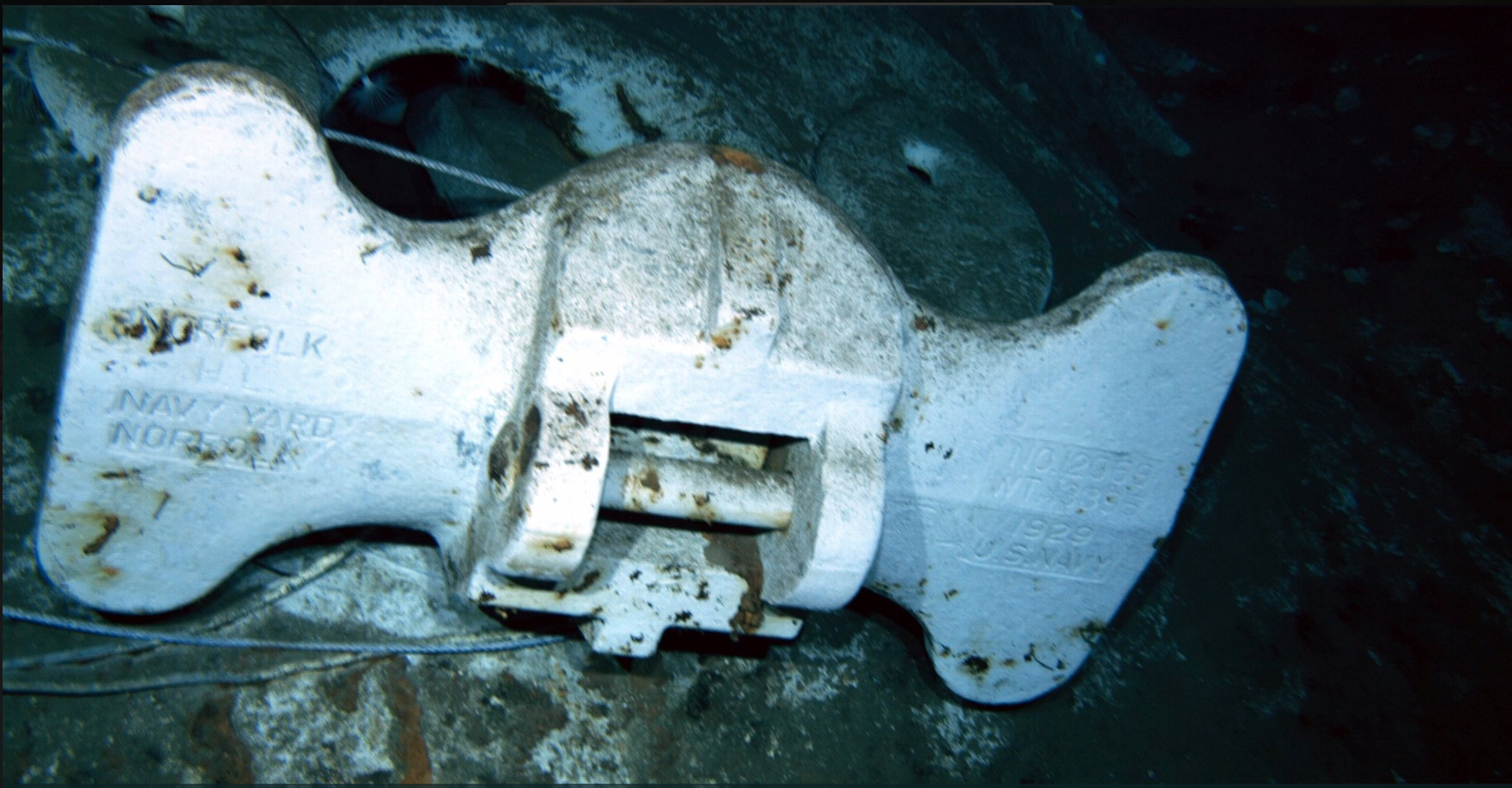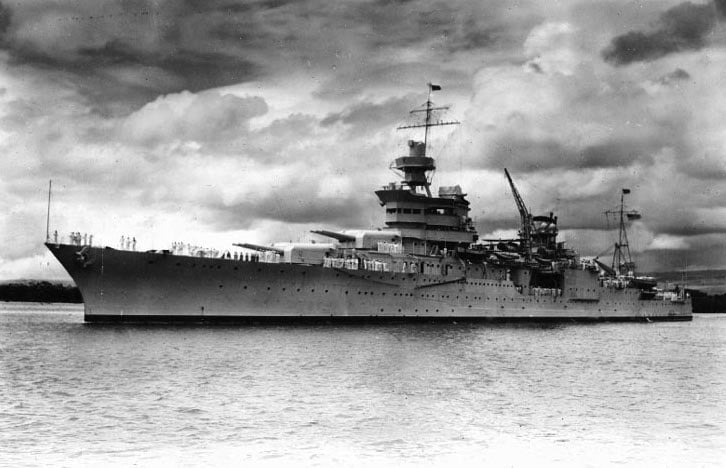
The condition of USS Indianapolis (CA-35), the World War II-era cruiser preserved for 72 years at the bottom of the sea, has so far proved to be most surprising to researchers studying the wreckage site discovered earlier this week.
“The paint is still in place, like on the anchor and on parts of the ship. On the anchor, you can read Norfolk on there. You can read on boxes, on supply boxes, you can read Indianapolis and read very clearly what is on that box,” said Robert Neyland, Underwater Archeology Branch Head with the Naval History and Heritage Command.
During a Facebook LIVE discussion Wednesday, Neyland and Richard Hulver, a historian with the command, described their research used by billionaire philanthropist and Microsoft co-founder Paul Allen used to find Indianapolis on Saturday.
Neyland explained the wreckage, more than 18,000 feet below the sea surface, is resting in a spot protected from currents, at a depth with low oxygen levels and little natural light. “This [was] one of the hardest shipwrecks in the world to find,” he said.
But the combination of circumstances making the search so difficult also means the wreckage is well preserved. Metal on the ship, based on the photos Allen’s team has released so far, doesn’t appear to be corroded. “Not much in the way of marine growth,” Neyland said
As Allen’s team releases more photos and video, Neyland said there will be more to talk about in terms of the ship’s condition and more about how its final moments.

Answering a question submitted during the LIVE event, Neyland said the wreckage’s final resting location also helps the long-term preservation of the site. Indianapolis is considered the property of the Navy and is by law considered a protected gravesite. But the extreme depth and rough undersea terrain make it very difficult to visit.
“Human divers cannot get to that depth,” Neyland said.
Allen’s team is working with the Navy to survey the site, and Neyland said is taking care in a very tough environment to not disturb the wreckage.
“This is an incredibly difficult survey, it’s like looking for something on the dark side of the Moon,” Neyland said.
Hulver, who is credited with discovering a long-overlooked clue to Indianapolis’ whereabouts, stressed how important it is to not forget the crew and the ship’s illustrious service.

Before the war, Indianapolis acted as a flagship for several years, even transporting President Franklin D. Roosevelt to South America as part of his “Good Neighbor” cruise in 1936, according to the NHHC. After the Japanese surprise attack on Pearl Harbor, Indianapolis was one of the first ships to respond, searching for enemy aircraft carriers thought to be nearby.
Hulver explained his first knowledge of Indianapolis’ story came through popular culture.
“Like many people out there, my initial introduction to the Indianapolis was ‘Jaws,’” Hulver said.
In the movie, fisherman Quint has a monologue detailing spending days in the water after Indianapolis went down, as sailors were attacked by sharks and succumbed to exhaustion.
“That was the time I was most frightened, waitin’ for my turn. I’ll never put on a life jacket again,” says the character Quint, played by Robert Shaw in the 1975 film.
Hulver said the shark attacks get the most attention, probably because of the film, and are an important part of the story, but exhaustion and dehydration were also major reasons why only 316 of the 800 sailors who entered the water were rescued.

But Quint’s line also alludes to one of the lessons learned from the incident. Hulver said the lifejackets used by Indianapolis sailors were only designed to be used for about 48 hours. The sailors were in the water for much longer than that, “and they started to weigh the men down.”
Both Hulver and Neyland said the real story of Indianapolis is one of courage, both during the war, and after torpedoes from a Japanese submarine sank the ship. For example, Lt. Thomas Michael Conway, ship’s chaplain, continued tending to men in the water, Hulver said, giving last rights to those dying, before he eventually succumbed to exhaustion and drowned.
“Indianapolis was one of the most decorated warships in WWII,” Hulver said of the ship which earned 10 battle stars. “This rich history has been overshadowed by its last 15 minutes.”





